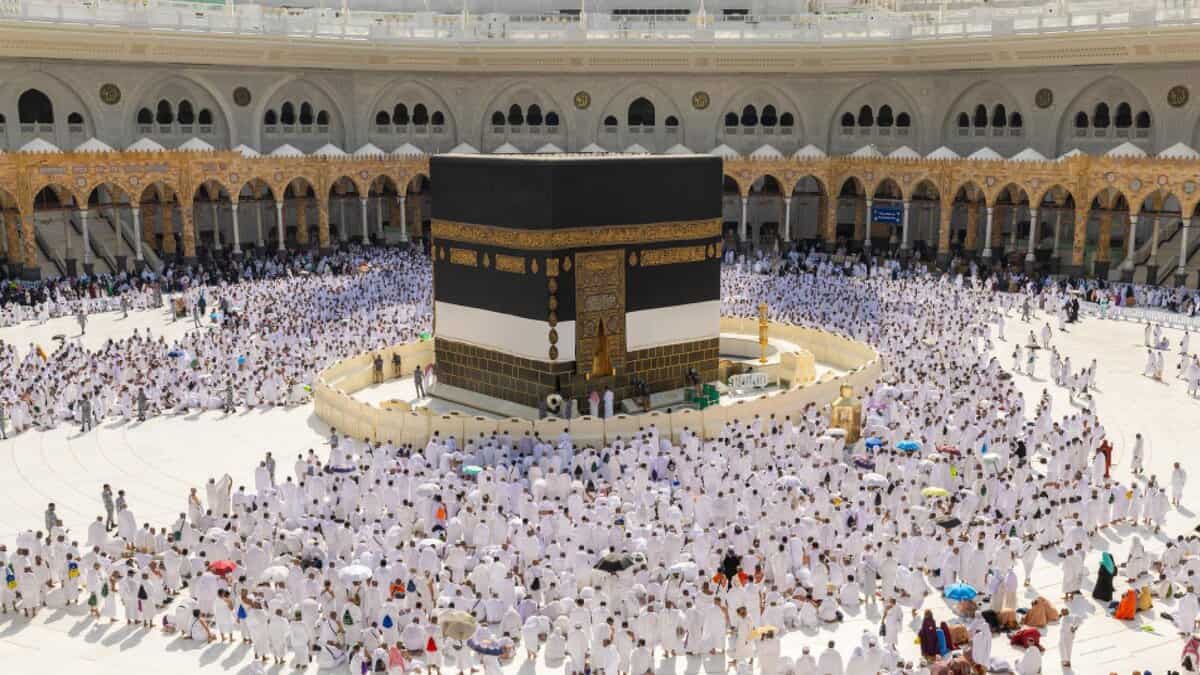
The General Presidency for the Affairs of the Grand Mosque and the Prophet’s Mosque is set to replace the Kiswah, the black cloth that drapes the Kaaba, at the Grand Mosque in Makkah, Saudi Arabia, at dawn on Thursday, June 26, corresponding to the first day of Muharram — the month that marks the beginning of the Islamic year 1447 AH.
The ceremony for removing the old Kiswah began on Wednesday, June 26 (Dhu al-Hijjah 29, 1446 AH), after the Asr prayer. Preparations included the removal of lanterns, chandeliers, and fixed ornaments from the Kaaba covering, as well as the lowering of the curtain over the door of the Honoured Kaaba, which measures 6.35 metres in length and 3.33 metres in width.
The Kiswah is widely regarded as the most expensive fabric in the world due to its intricate craftsmanship, luxurious materials, and spiritual significance. This year’s Kiswah was produced at a cost of 25 million Saudi Arabian Riyals (SAR), covering the expenses of raw materials, artisan wages, and administrative operations.
It was manufactured at the King Abdulaziz Complex for the Holy Kaaba Kiswah, located in the Om Al-Joud district of Makkah, over a period of nearly 11 months. A total of 154 skilled Saudi artisans contributed to its creation.
Measuring 14 metres in height and weighing 1,415 kilograms, the cloth includes 54 gilded panels and 47 silk pieces embroidered with 68 Qur’anic verses. It also bears the names and attributes of Allah, including Ya Allah, Ya Mannan, Ya Dayyan, Subhanallahi wa bihamdihi Subhanallahil Azeem, and La ilaha illallah Muhammadur Rasulullah.
Materials used in the Kiswah include 825 kilograms of raw silk, 120 kilograms of gold thread, and 60 kilograms of silver thread plated in 24-karat gold. Additionally, 17 lanterns bearing supplicatory inscriptions are incorporated into the design.
The Kaaba’s door is adorned with five curtains embroidered with Qur’anic verses and the full text of Surah Al-Fatiha, Surah Al-Falaq, Surah An-Nas, and Surah Quraysh.
Seven varieties of premium fabric were used in the production, including patterned and plain black silk, red and green silks, light beige cotton lining, white cotton, and a distinctive patterned green silk, also used in the Kaaba’s interior and the Prophet’s Chamber in Madinah.
The manufacturing process followed seven precision-based phases: desalination, cleansing, weaving, printing, embroidery, joining, and quality inspection.
Earlier this month, Prince Saud bin Mishaal bin Abdulaziz, Dep6uty Governor of Makkah and Vice Chairman of the Permanent Committee for Haj and Umrah, officially handed over the new Kiswah to the caretakers of the Holy Kaaba.
Editor’s note: This story has been updated to clarify that the ceremony for removing the old Kiswah began on Wednesday, June 26, after Asr prayer, while the actual replacement will take place at dawn on Thursday.
Editor’s note: A previous version of this article incorrectly stated the date as June 27. It has been corrected to June 26.



